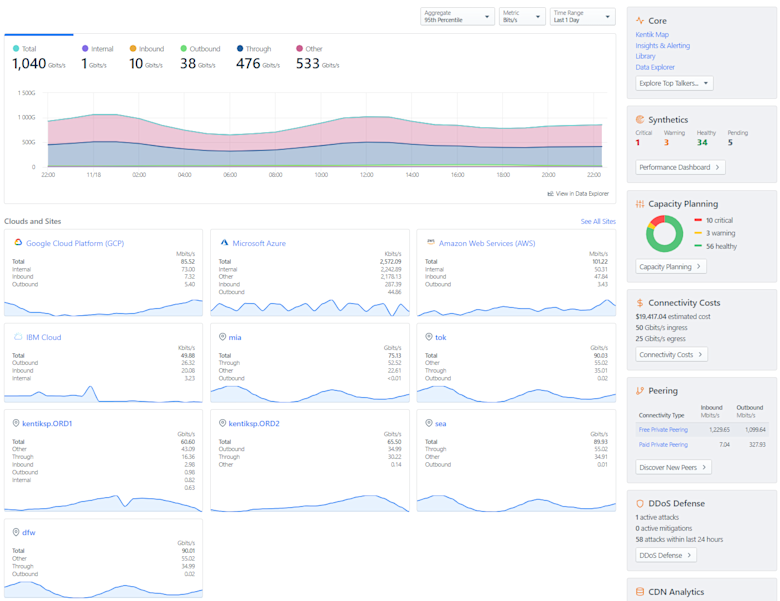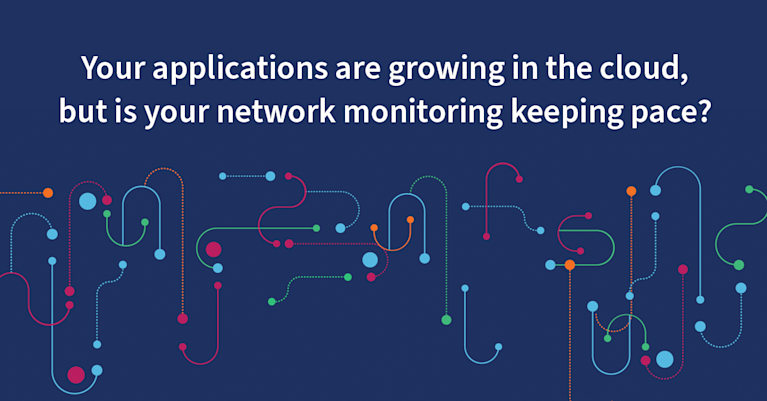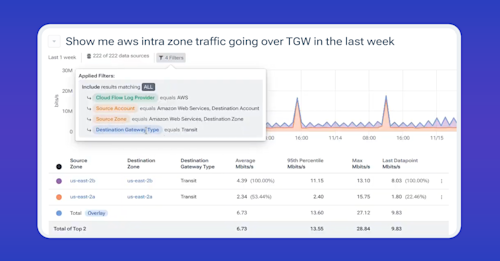Cloud Visibility Tools
What is cloud visibility?
Cloud visibility refers to the ability to have a comprehensive view into all the activity within your cloud network. This gives you greater control over your cloud infrastructure so you can monitor cloud security, any performance issues, and optimize cloud costs.
What are cloud visibility tools?
Cloud visibility tools allow IT teams, network engineers, security analysts and other stakeholders to understand what is happening within cloud environments. They allow these teams to monitor, troubleshoot, and optimize their cloud resources within all types of cloud environments and private data centers.
Cloud visibility tools come in many forms. The best ones for you depend on which types of cloud visibility you need, how your cloud environment is configured, and the public cloud being used (AWS, Google Cloud, Azure, etc.).
Types of cloud visibility tools
General-purpose cloud visibility tools
The most generic category of cloud visibility tool consists of tools offered by cloud providers to help monitor and track their cloud environments. Examples include AWS CloudWatch and Google Cloud’s operation suite (formerly known as Stackdriver).
These tools aren’t designed for a specific type of visibility, like cloud security monitoring or cloud infrastructure monitoring. Instead, they can collect data from all kinds of cloud resources — infrastructure, data centers, SaaS resources, cloud load balancers and so on — to provide a high-level overview of what is happening inside a cloud environment.
That said, general-purpose cloud visibility tools typically don’t provide fine-grained context into particular types of issues. For example, they aren’t useful for drilling down and gaining nuanced context on security issues or infrastructure problems.
These tools also usually work only within a given cloud; AWS’s visibility tools only support AWS, for example. That’s a limitation if you use multiple clouds because you won’t be able to monitor all of them with a single cloud provider’s tool.
For both of these reasons, generic visibility tools like CloudWatch are helpful as a starting point for building a complex cloud visibility solution, but they rarely suffice on their own.
Use case-specific visibility tools
Several other types of cloud visibility tools are available that focus on specific use cases.
Multi-cloud visibility
Visibility and observability tools developed by independent vendors offer the ability to monitor multiple cloud environments at once. These tools can usually monitor on-premises infrastructure or private clouds as well. For this reason, IT operations teams often use these types of tools as the basis for tracking a business’s IT estate as a whole.
Network monitoring and observability
To gain deep visibility into the state of cloud networks, you’ll want a network observability tool designed to collect and correlate data from the networks that exist within a single cloud environment and networks that connect different clouds as part of a hybrid or multi-cloud architecture. Below is an example of a network intelligence platform collecting and displaying data in a multi-cloud environment.

It’s only by contextualizing networking data that you can gain meaningful insight into complex cloud networks, where traffic constantly moves between clouds and where abstractions like VPCs and software-defined networks can make network visibility particularly challenging.
Security monitoring
Security information and event management (SIEM) and security orchestration, automation and response (SOAR) tools can detect and help manage security risks in the cloud. Security operations teams and analysts typically use them to track the security status of cloud environments. This helps ensure consistent security and compliance standards while eliminating blind spots commonly seen in cloud environments.
Choosing a cloud visibility tool
When evaluating visibility tools for use in the cloud, consider factors like the following:
- Does the tool work with all public, private, and hybrid clouds you need to support?
- Does the tool help you to analyze data, or is its functionality mainly limited to data collection?
- Can the tool map discrete data sets (such as data from a network switch and data from a public cloud flow log) to provide focused context into complex performance or availability issues? Or does the tool leave it to you to determine relationships between different types of data?
- How is the tool deployed? Does it require agents to be installed across your cloud environments, or can you deploy it automatically, in an agentless way?
- How many cloud resources does the tool consume to run? This is important because tools with high resource consumption may burden your environment and because you’ll pay for the compute and memory resources that the tools consume if you run the tool in the public cloud.
There’s a belief that cloud computing will provide automation and reduce the need for visibility. However, experienced cloud and infrastructure engineers report just the opposite. With the widespread migration of applications and workloads to public clouds, understanding cloud visibility tools is more important than ever. Kentik can help.


